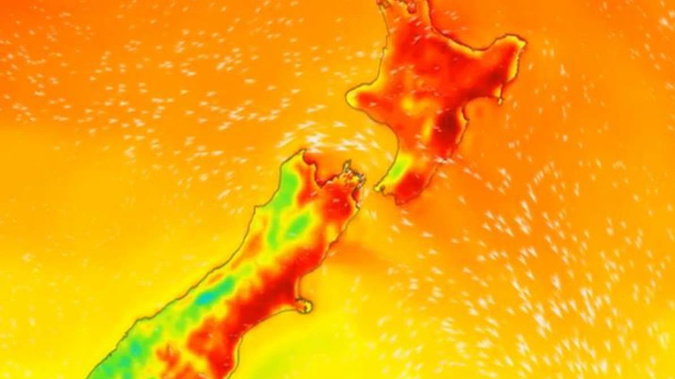
A forecast sweltering heatwave is gripping the country, breaking long-time records and pushing temperatures close to 40C in places.
WeatherWatch NZ has reported recordings of 37C in parts of Napier and Hastings, and 36C in the Marlborough Sounds.
Analyst Philip Duncan said some of those higher temperatures were recorded in more sheltered areas and not across the whole regions. However, generally temperatures in eastern parts of the country were getting up around 33C to 34C.
Niwa said already in the Nelson region the record for the warmest minimum temperature had been broken, with 24.3C recorded in Richmond.
This was the warmest minimum temperature for the region since records began 157 years ago.
The previous record was 23.7C.
🚨 BREAKING NEWS: All-Time Temperature Record Set! 🚨
— NIWA Weather (@NiwaWeather) January 27, 2019
The minimum temperature in Richmond only reached 24.3°C this morning!🔥
That is a new ALL-TIME warm minimum temperature record for the Wider Nelson region. Records began there 157 years ago!
The previous record was 23.7°C pic.twitter.com/thAbSSVjsM
The hottest maximum temperatures so far have been on country's east coast, with Kaikōura hitting 33.4C this morning, and Blenheim and Napier 32.2C, according to MetService.
Gisborne was forecast to hit 34C later today, with similar conditions in Hawke's Bay. In the South Island the hotspots would again be in the east with Blenheim on 35C forecast.
Kaikoura already at 33.4°C. Whoa! 😎😎😎 Blenheim not far below at 32.2°C. Only 22°C here at the office in Wellington. The seabreeze has kicked into Kaikoura now and things are cooling down a bit there.
— MetService (@MetService) January 27, 2019
^Tui
The impressive hot weather was driven by sweltering conditions in Australia.
"The hot weather Australia suffered has helped warm the Tasman Sea and the air above it, helping to transport warm air our way," MetService meteorologist Tui McInnes said.
"Which, combined with settled conditions, paves the way for some hot weather ourselves, especially for those in eastern regions."
The weather can be defined as a heatwave because a number of places throughout the country meet the threshold of one, McInnes said.
As defined by the World Meteorological Organisation, five consecutive days with maximum temperatures 5C above average is a heatwave.
Sorry Kaikoura and Blenheim. The muritai (seabreeze) knocked you off your perch. Now Napier sits top at 32.2°C!
— MetService (@MetService) January 27, 2019
^Tui
MetService meteorologist Amy Rossiter said warm temperatures were expected over summer, but the length of the extremely warm period was unusual.
"Some parts of the South Island might only get six days over 30C in a year, and this week they could get five or six days in a row," Rossiter said.
The warm air mass is forecast to stick around until Thursday before a front moves up the country on Friday, bringing cooler temperatures.
Take your Radio, Podcasts and Music with you









